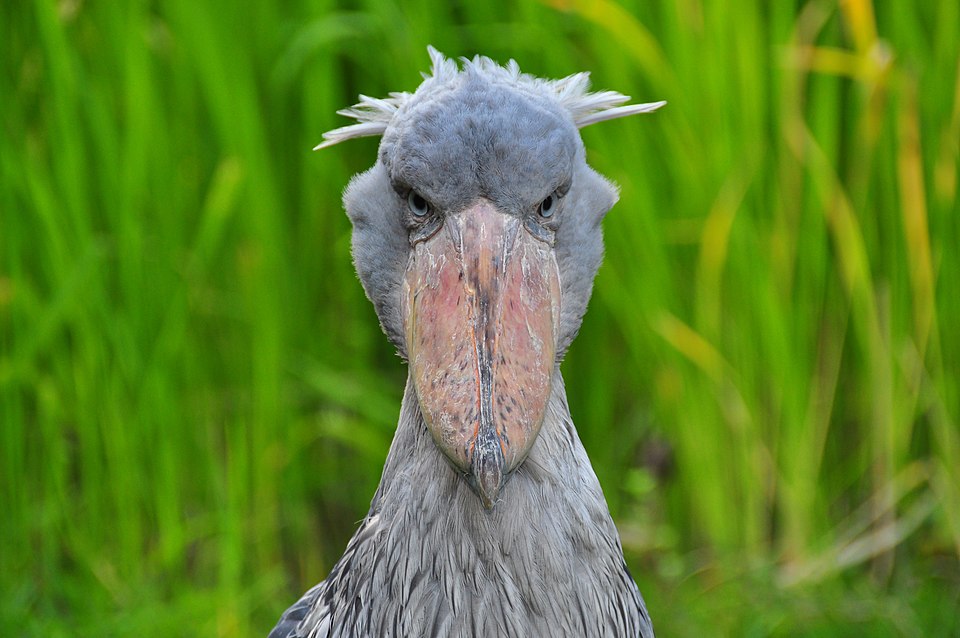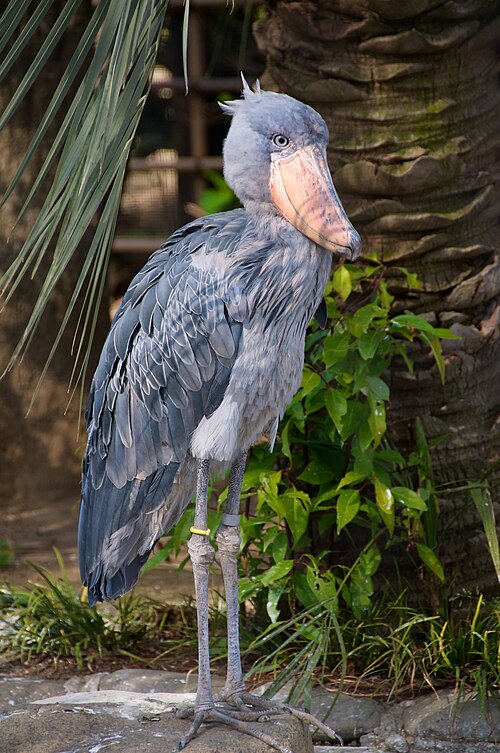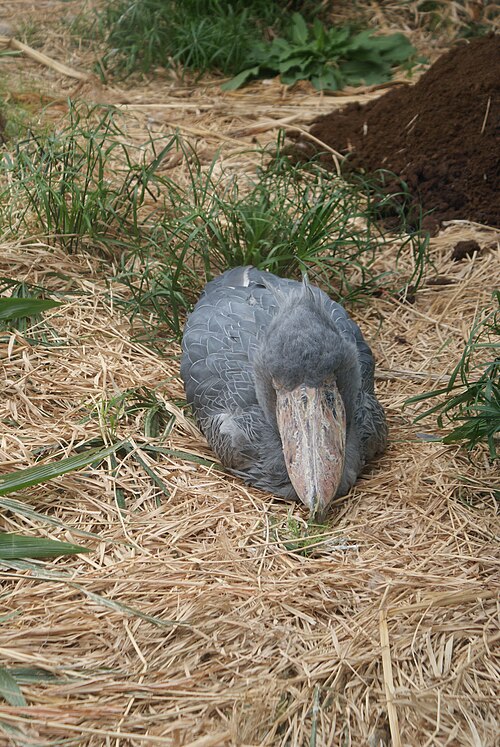Shoebill Bird – Nature’s Prehistoric Oddball

If there was ever a bird that looks like it walked straight out of Jurassic Park, it’s the shoebill. Towering, intense, and oddly majestic, this stork-like creature has earned internet fame for its fearsome stare and dinosaur-like presence. But beyond the memes and viral videos, the shoebill is one of the most fascinating and unique birds on the planet.
What Is a Shoebill?
Scientifically known as Balaeniceps rex, the shoebill is a large bird native to the swamps and wetlands of central tropical Africa, especially in countries like Uganda, Zambia, and South Sudan. Its name comes from its massive shoe-shaped bill, which can grow up to 9 inches (24 cm) long and is powerful enough to crush prey in a single bite.
Despite their stork-like appearance, shoebills are actually more closely related to pelicans and herons.

A shoebill standing at Ueno Zoo, Tokyo – Creative Commons | Author: Bob Owen – Source: https://commons.wikimedia.org/wiki/File:Balaeniceps_rex_-Ueno_Zoo,_Tokyo,_Japan-8a.jpg
A Face Only a Biologist Could Love?
Let’s be honest, the shoebill looks… intense. With its piercing yellow eyes, massive beak, and tall, grey-blue body, it’s a bird that demands attention. At first glance, it might seem intimidating (some say even terrifying), but many birders and wildlife enthusiasts find it downright beautiful in its own peculiar way.
Hunting Like a Boss
The shoebill is a patient predator. It can stand motionless for hours, waiting for the perfect moment to strike. Its favorite meal? Fish, especially lungfish and tilapia, but it’s not above munching on eels, frogs, snakes, and even baby crocodiles. That giant bill isn’t just for show; it’s a deadly tool for snatching slippery prey in swampy waters.
One of the most incredible things about the shoebill is how it hunts using a technique called “collapsing,” where it suddenly falls forward to snatch prey in the mud and water, scooping it up in one swift movement.
Mysterious Behavior
Shoebills are mostly solitary and don’t do well in large groups. They’re quiet most of the time, but during nesting, they’ll communicate with their mate using loud bill-clattering sounds that echo through the wetlands. The species lays only one to three eggs, and often only one chick survives, making their population growth quite slow.
Conservation Status
While not officially endangered, the shoebill is listed as Vulnerable by the IUCN. Habitat loss, disturbance from humans, and illegal wildlife trade are serious threats. Conservation efforts in parts of Uganda and Zambia have focused on protecting the wetlands they call home and raising awareness about this incredible bird.
Why People Love Them
– They look like dinosaurs (seriously).
– Their stillness and intense stare have inspired countless memes and TikToks.
– They’re rare and elusive, making spotting one in the wild an unforgettable experience.

A sitting shoebill in Prague Zoo, Czech Republic – Creative Commons | Author: Хомелка – Source: https://commons.wikimedia.org/wiki/File:Balaeniceps_rex_in_Prague_Zoo_03.JPG
Where to See One
If you’re dreaming of meeting a shoebill in person, Uganda’s Mabamba Swamp is one of the best places in the world to spot them in the wild. Some zoos also house shoebills, but sightings are rare due to their delicate care needs.
The shoebill is proof that nature still has secrets to share, and strange, stunning creatures hiding in plain sight. With its prehistoric vibe and commanding presence, the shoebill reminds us that not all birds are meant to be cute and cuddly. Some are meant to awe, intimidate, and inspire.
So, next time you’re scrolling through animal videos, keep an eye out for this feathered giant. You might just find yourself falling in love with the most bizarre bird in Africa.
References:
Wikipedia










